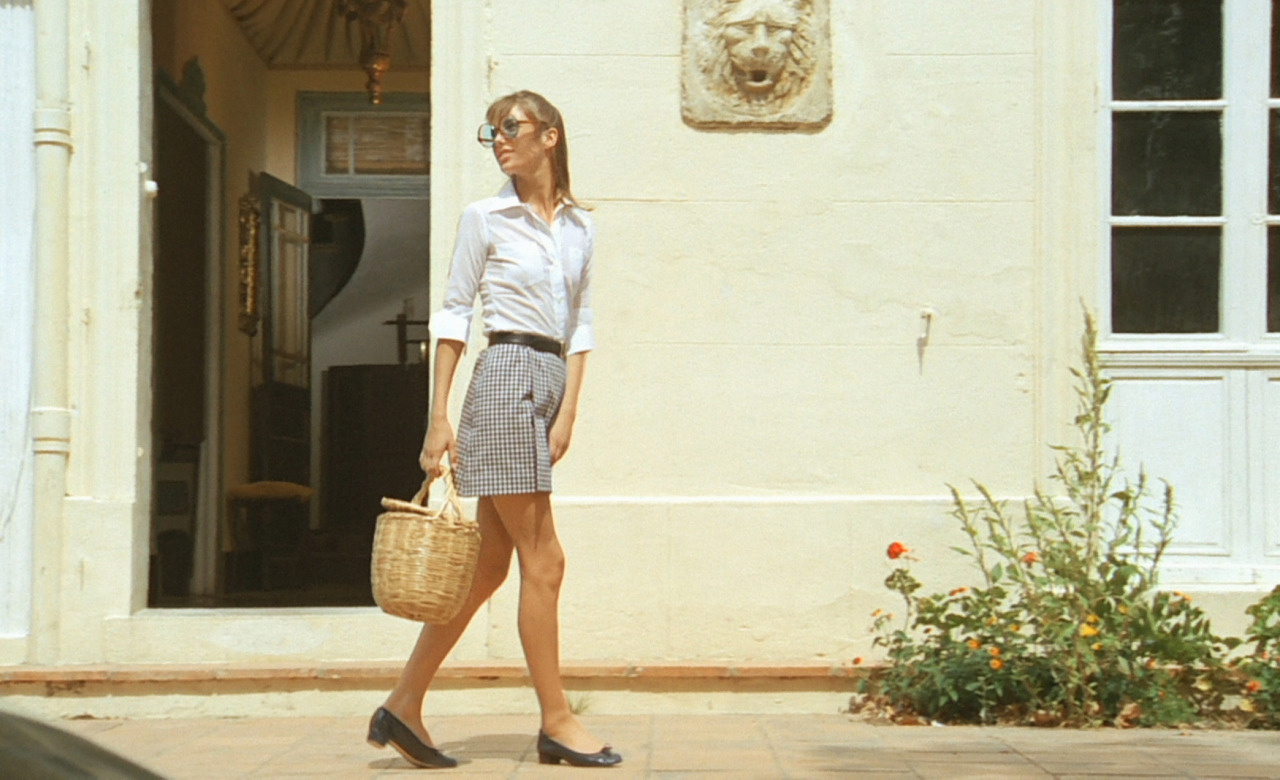Jane Birkin, the iconic muse of the Hermés Birkin bag, is remembered as a pioneer of the “off-duty model look” and “effortless French chic” style. Her personal wardrobe, characterized by fringe, flared or denim jeans, and crisp white t-shirts, showcased her laissez-faire attitude. However, her various movie roles allowed her to explore different personas and fashion styles, giving the impression that she had lived multiple lives.
In her earliest project, the film Blow-Up (1966), Birkin sported her signature haircut with long wispy bangs framing her face. Playing the role of “The Blonde,” she exuded a youthful and energetic vibe that perfectly matched the swinging sixties. Her wardrobe consisted of knit shorts, over-the-knee socks, and brown leather boots, capturing the essence of the era.
In the film Wonderwall (1968), Birkin portrayed a counterculture icon named Penny Lane. Her character embraced bold colors, such as bright blue eyeshadow and green nails, reflecting the groovy style of the time. She dressed head-to-toe in staples of the decade, including a suede-belted coat, tan knee-high boots, and a leather mini dress. The most iconic outfit she wore in the film was a red-printed kimono in the dramatic final scene.
Taking a more provocative turn in the French film La Piscine (1969), Birkin showcased a scandalous lolita-esque fashion sense. Her wardrobe emphasized the overtone of the movie, with variations of blouses paired with mini to midi skirts. Knitted dresses, crocheted to end mid-thigh, added an autumn-like feel to her appearance despite the summer setting.
In the film Slogan (1969), Birkin met her future partner Serge Gainsbourg and became part of the “it-couple” of the ’70s. Her character, Evelyne, often displayed her personal style amid her costumes. Notably, she wore a trench coat that became synonymous with Birkin and her iconic wicker basket bag, which later inspired the creation of the Hermés Birkin bag.
The story behind the creation of the Birkin bag is quite humble. Birkin’s then-husband Jacques Doillon ran over her everyday handbag out of frustration. In a rush to find a replacement, she settled for her wicker basket. Sitting next to Jean-Louis Dumas, the CEO of Hermès at the time, her belongings tumbled out as she pushed the basket into the overhead compartment. Inspired by this incident, Dumas sketched the design of the first Birkin bag on an airplane sick bag. Since then, the Birkin bag has become a coveted symbol of status for celebrities and the elite.
In the film Love at the Top (1974), Birkin played the role of Marie-Paule, described as a “sunny-natured streetwalker.” Her character donned flowing attire that elegantly draped her long legs and framed her arms. Flowy blouses and slacks were her go-to choices, often paired with a loose bun. The bell-bottom trousers she wore accentuated her slender silhouette, embodying her character’s carefree spirit.
Jane Birkin’s influence in film transcended to the world of fashion. From her signature simple white tops to the iconic Birkin bag, she lived a long and influential life. Although she has passed on, her legacy continues to thrive, breaking boundaries and inspiring generations to come.
Denial of responsibility! VigourTimes is an automatic aggregator of Global media. In each content, the hyperlink to the primary source is specified. All trademarks belong to their rightful owners, and all materials to their authors. For any complaint, please reach us at – [email protected]. We will take necessary action within 24 hours.


